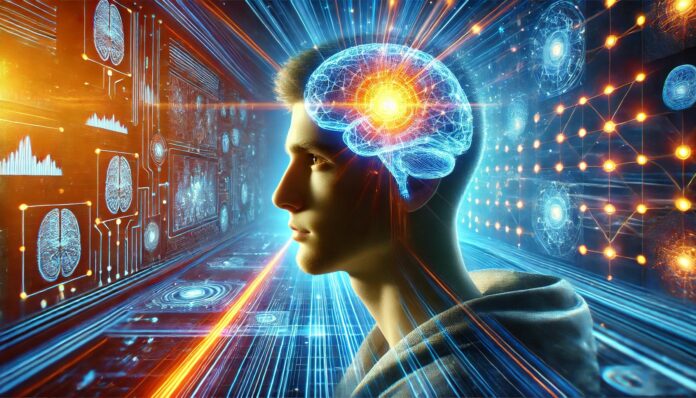Human brain’s remarkable architecture, home to approximately 90 billion neurons. While this astonishing number of neurons represents the fundamental building blocks of our cognition, emotions, and behavior, the dispersion of numbers for each function is not equally spread. Not many know what truly sets the brain apart is how this network of neurons coordinates complex processes, particularly in relation to movement control. Recent studies suggest that around two-thirds of our neurons are dedicated not to thinking and feelings but to orchestrating movement. Understanding this can provide valuable insights into neuropsychology, neurofeedback, and psychotherapies and therapies for motor-related disorders.
Neuropsychology of Movement: Linking Mind and Motion
In neuropsychology, movement isn’t just a physical phenomenon but a critical aspect of how the mind interacts with the body. Movement directly influences brain function and vice versa. Studies show that when we move, our brain releases molecules that can elevate mood, enhance attention, and improve cognitive function. Also, there are molecules released by muscles during exercise that have antidepressant effects.
These interactions reveal how movement can be a valuable tool in therapeutic settings.
The molecules released by the brain during physical activity that act as natural antidepressants include:
1. Endorphins: These are often referred to as “feel-good” chemicals. They reduce pain and promote feelings of pleasure and euphoria.
2. Dopamine: Physical activity stimulates the release of dopamine, a neurotransmitter that plays a key role in motivation, reward, and mood regulation.
3. Serotonin: Exercise boosts serotonin levels, which helps regulate mood, sleep, and appetite.
4. Brain-Derived Neurotrophic Factor (BDNF): This protein supports the growth and survival of neurons and is associated with improved mood and cognitive function.
5. Endocannabinoids: These are lipid-based neurotransmitters that promote relaxation and reduce anxiety, contributing to the “runner’s high” experienced during prolonged exercise.
These molecules collectively enhance mood, reduce stress, and help combat depression naturally.
The molecules released by muscles during exercise are called myokines and also have antidepressant effects. These include:
1. Irisin: This myokine is released during physical activity and is associated with improved mood and brain health. It helps regulate BDNF (Brain-Derived Neurotrophic Factor) levels, which supports brain plasticity and combats depression.
2. Interleukin-6 (IL-6): Although it is often associated with inflammation, IL-6 released during exercise has anti-inflammatory and mood-enhancing effects.
3. Myonectin: This myokine plays a role in metabolic regulation and is thought to contribute to the antidepressant effects of physical activity.
4. Cathepsin B: Exercise-induced release of this protein from muscles can cross the blood-brain barrier and promote BDNF expression, aiding in cognitive function and mood enhancement.
5. SPARC (Secreted Protein Acidic and Rich in Cysteine): This myokine may help modulate brain plasticity and mood regulation, indirectly supporting antidepressant effects.
These molecules demonstrate the powerful connection between muscle activity and mental health, explaining why regular exercise is often recommended as part of managing depression and anxiety.
Movement Control: A Major Focus of Neuronal Activity
It is estimated that approximately two-thirds of our brain’s neurons are involved in movement control in some capacity. This focus on movement underscores the importance of motor skills in human function. The brain’s dedication to movement is not just about voluntary actions, like reaching for an object, but also includes involuntary processes such as maintaining posture, balance, and fine-tuning muscle control.
Neurofeedback: is considered to be the best professional technique for brain training, including motor control, emotional regulation, and cognitive function. Neurofeedback is used for conditions like ADHD, anxiety, and motor control disorders. By targeting specific neural patterns, individuals can improve their focus, regulate mood, gain greater control over movement, and learn overall self-regulation of the brain.
Dancing as the Ultimate Brain-Boosting Activity
Among all movement-based activities, dancing stands out as a perfect partner for brain development. When we dance, we engage nearly every brain region involved in motor control, coordination, rhythm, and memory. The act of learning and executing dance steps stimulates the cerebellum, motor cortex, and basal ganglia, while synchronizing to music boosts brain plasticity—the brain’s ability to rewire itself and form new neural pathways.
Dancing combines physical activity, coordination, creativity, and emotional expression, making it an incredibly effective workout for both the body and the brain. Studies show that dance can enhance memory, improve mood, and even reduce the risk of cognitive decline. For perfect brain activity, dancing represents an ideal tool to foster brain health, improve motor skills, and strengthen cognitive function. So, whether for therapeutic purposes or just for fun, dancing is one of the most enjoyable ways to keep the brain active, adaptable, and resilient.




